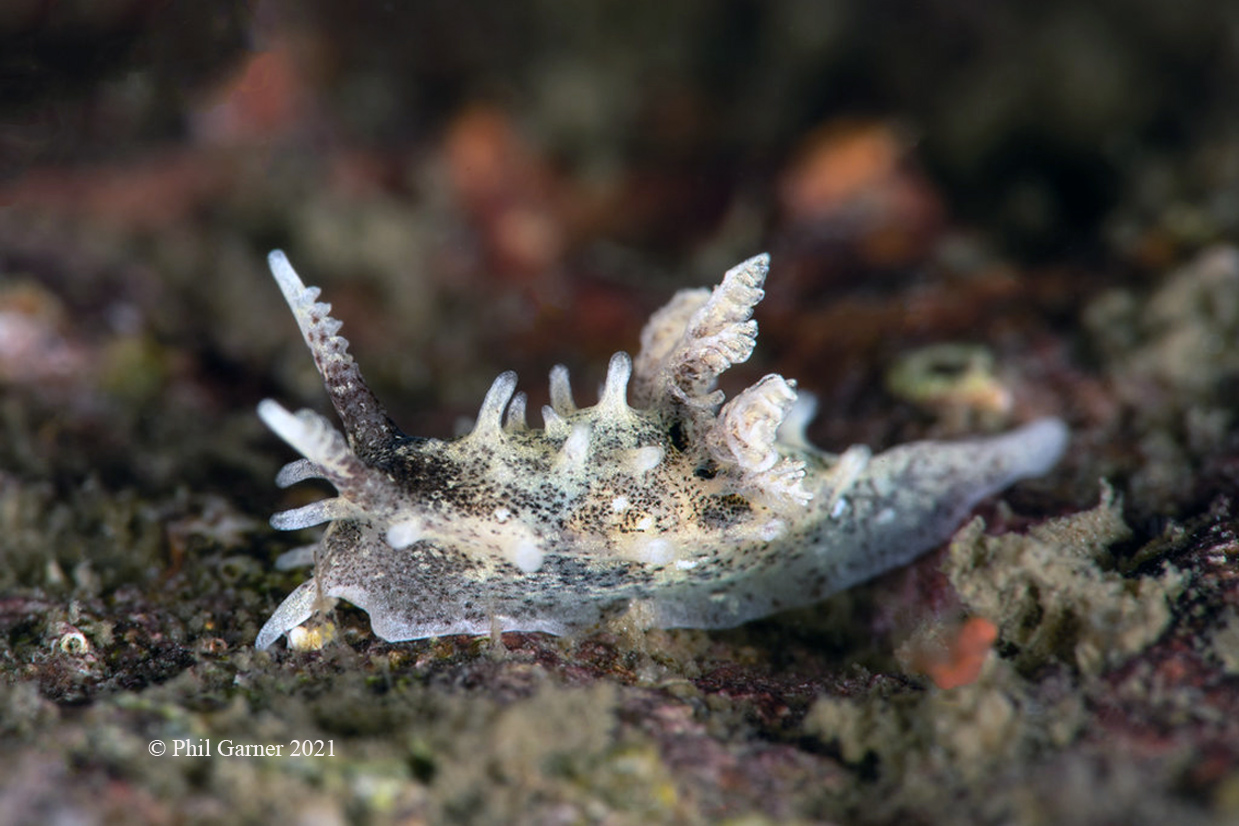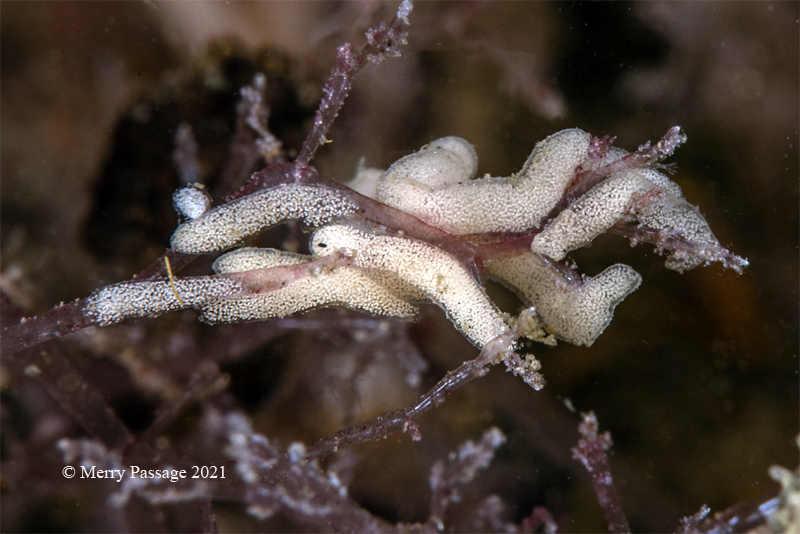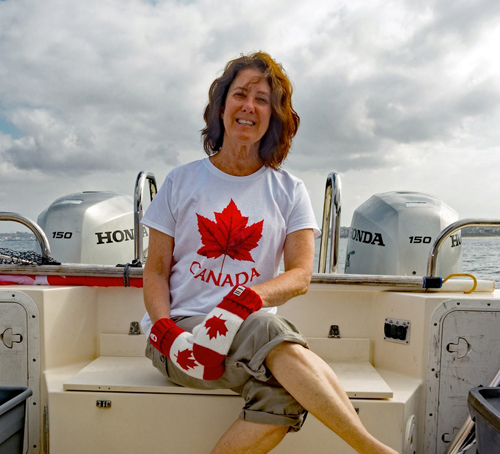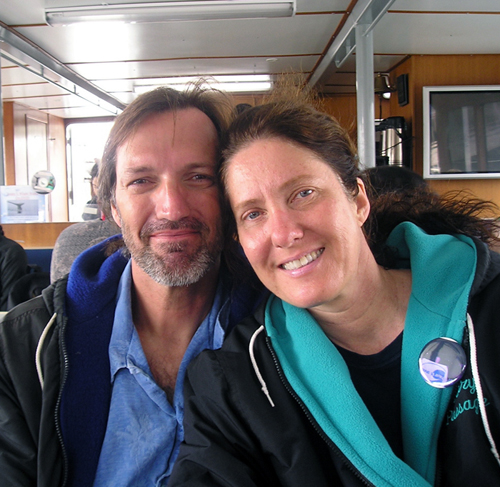 |
Okenia angelensis
Image courtesy of Merry Passage and Phil GarnerPhoto by Phil Garner
Divesite: King Harbor, Redondo Beach, California
Image courtesy of Merry Passage and Phil Garner
 | Okenia angelensis Lance, 1966 For years now I thought this species was named after Los Angeles, California. Well apparently, I was wrong - old time Brancher, Jim Lance, from Scripps Institute, named it after Bahia de los Angeles in Mexico, one of Jim's favorite Branching spots. The "ensis" ending tells us it was named after a place, in this case the type locality. Not particularly common at all, a bunch of us were surprised to see a population explosion of this species in southern California recently. Merry captured these photos while diving under Phil and her boat over a muck bottom. Typically, Okenia, the dorsum bears a series of short, cylindrical processes, 6-9 along the sides and 2 anterior to the rhinophores, and 4-5 down the center of the dorsum between the rhinophores and gill. The body is whitish with brown patches and flecks, as is the base of the rhinophores. The species is quite small, only to 12mm in length explaining why we don't see it more often, and ranges from San Francisco Bay where I first saw it south through Mexico to Chile. Nice job Phil and Merry. |
Sammamish, WA 98074
Sept., 2021
Send Dave email at davidwbehrens@gmail.com

Phil Gardner Merry Passage worked as a genetics research scientist at Harbor UCLA for three decades. After retiring she has used her degrees from Arizona State University and laboratory experience as an aid to scuba diving. She spends countless hours researching many of the animals we find underwater. Her home office is filled with binders and identification books from algae to whales. Phil Garner has been scuba diving since 1989. Before that, he enjoyed free diving the many reefs around Palos Verdes. He met Merry Passage during a beach dive at Marineland in 2006 and they have been a team ever since. Phil is the author of Diving The Palos Verdes Peninsula . He and Merry can be found branching as often as possible.
Send Merry email at mbpassage@yahoo.com
|

|

|
